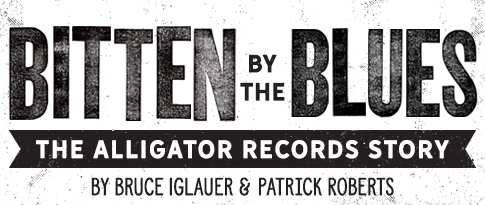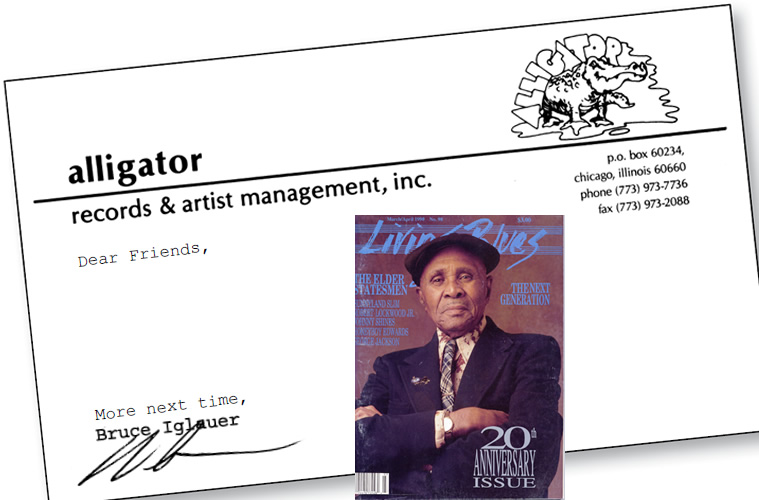Dear Friends
It’s kind of hard to believe. 1990! LIVING BLUES will be twenty years old next month. Makes me kind of proud (in case you who didn’t know, the first LIVING BLUES publication office was my one-room apartment in uptown Chicago, and I was on the editorial board for the first few years, until Alligator became too time-consumning a .job). It constantly amazes me how the blues audience has grown so much over two decades. But it also frustrates me that there are so many more people who still haven’t discovered (or been dragged kicking and screaming to) our music. Time to buckle down for the next twenty years!
Since my last letter, I’ve almost completed the new Koko Taylor album, “Jump For Joy.” Look for -it in March. The debut album by Saffire–The Uppity Blues Women will be “on the streets” by the time you read this, and I lucked into a newly-produced album by Charlie Musselwhite which will also be coming out in February. Charlie has been a casual friend of mine for years. In fact, he worked as Delmark Records’ shipping clerk before I did. More importantly, he’s one of the great blues harmonica players, deeply rooted in the tradition but not bound by it. Charlie grew up in Memphis and honed his chops with the masters on the South Side. He’s been living on the West Coast for years, but he tours ail over the world, so chances are he’ll be in your town soon. Keep your eyes open! Meanwhile, for some absolutely excellent deep blues harmonica, check out the new album —”Ace of Harps.”
Last issue I was telling you about the creation of our “Living Chicago Blues” series back in 1977. After Sonet Records came through with the financial help, I had the pleasant but frustrating task of trying to choose nine bands (three per album) that I felt were the “cream” of the unrecorded or under- recorded Chicago blues artists. At that time, so little recording was going on that a lot of journalists (especially in England) had announced that the blues was dead in Chicago. As I was going out six nights a week to hear local blues bands, that was pretty frustrating to read!
Anyway, I knew some: of the artists I wanted for sure –Jimmy Johnson, who had come on the blues scene a couple of years earlier after playing R&B for years and had already developed his distinctive vocal and guitar sound; Eddie Shaw and the Wolf Gang, still blowing the blues together on the West Side after the death of the boss, Howling’ Wolf; Left Hand Frank, one of the most down-home of Chicago bluesmen, who had hung out at Florence’s and played with Hound Dog Taylor; Magic Slim and the Teardrops, who were still carrying on the ” houserock in ’ ” ti’adition at Florence’s and other South Side clubs; and of course Lonnie Brooks, who had re-committed to the blues after being sort of a “human juke box” on West Side bandstands in the late 60s and early 70s. That left four slots to fill, and literally dozens of possible candidates. So I was forced to spend night after night in the bars, listening to all kinds of blues bands till all hours of the morning. What a terrible fate!
More next time,
Bruce Iglauer

